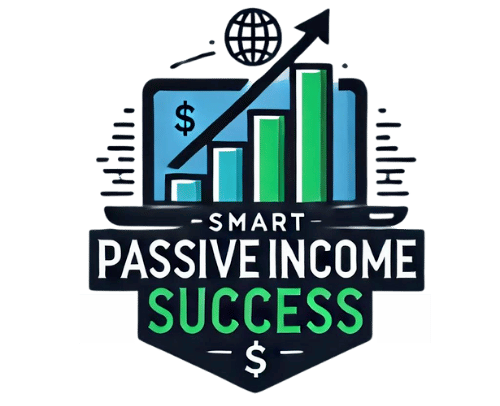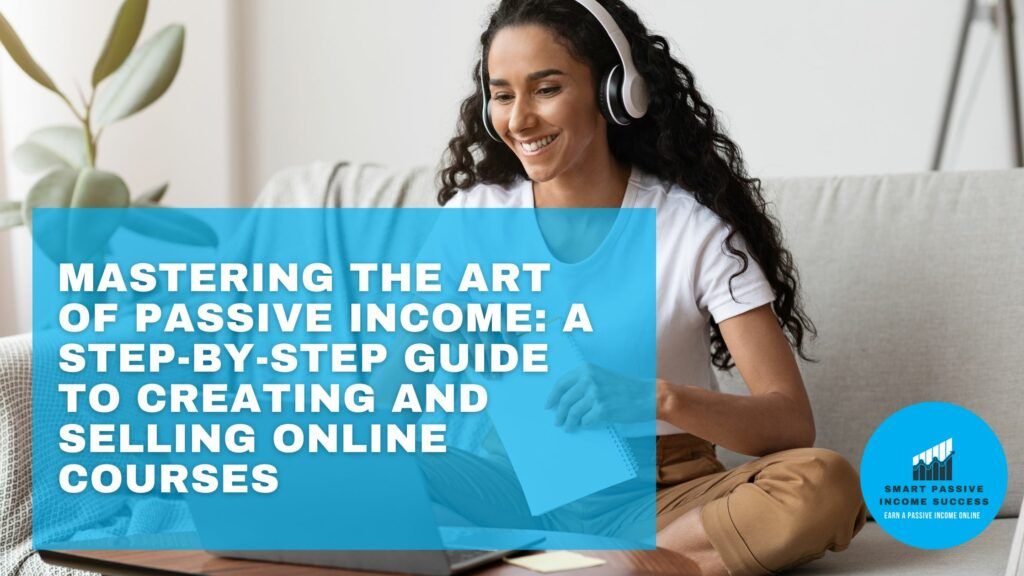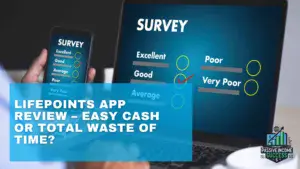I’m going to guide you through an exciting realm: the bustling market of online courses. This isn’t just about teaching; it’s also about forging a sustainable income stream. You’ll find out about the booming online education industry revolutionising how knowledge is shared and monetised.
Picture this: a world where your expertise generates revenue while you sleep. That’s the potential of online courses. They’re not just assets; they’re investments in your future. With the right content, you can create a course once and sell it many times over, creating a formula for passive income that can be incredibly rewarding.
This surge in digital learning isn’t a fluke. It’s driven by a growing appetite for knowledge, flexibility in learning, and the convenience that online courses offer. I’ll help you understand how you can tap into this demand and transform your skills and knowledge into a course that sells.
Now, it’s important to note that the cornerstone of a successful online course is the value it offers. Your knowledge and experience are the raw materials, and with the right craftsmanship, they become a beacon for eager learners who are willing to pay for expertise.
As we move on to the next section, keep in mind that choosing the right topic is crucial. I’ll show you how to identify your niche, which is the first step towards creating and selling an engaging and marketable online course.
Table of Contents
Identifying Your Niche: The First Step to Success

So, you’re looking to tap into the vibrant world of online courses. That’s a smart move, but where do you start? It all begins with identifying your niche. This isn’t just about what you know; it’s about what you love and what others are eager to learn.
Choosing a topic you’re passionate about is crucial. Your energy and enthusiasm will shine through to your students, and that can make all the difference. I’m going to help you hone in on subjects that excite you and meet a need in the market.
You’ll want to conduct some research to understand the needs and gaps within your potential topics. Ask questions like: Are people actively seeking information on this subject? What’s the level of competition, and where can I carve out my unique space? This step is about aligning your interests with what’s actually in demand.
Finally, let’s talk about expertise. You don’t need a PhD to teach an online course, but you should have a strong grasp of your subject. Choose something that resonates with you and where your knowledge or experience gives you a special edge. It’s about bringing something valuable to the table that learners will be willing to pay for.
Designing Your Course: Structuring for Effective Learning

I’m going to walk you through the essential steps for structuring your online course to enhance effective learning. This isn’t just about putting together videos and PDFs; it’s also about creating a journey that captivates and educates your audience.
Firstly, it’s crucial to understand the different learning styles that your potential students might have. Some people learn best through visuals, others through auditory means, and yet others through kinesthetic or hands-on activities. This means you’ll need to mix it up a bit: include video lectures, incorporate downloadable materials, and perhaps create interactive tasks to keep everyone engaged.
Outlining your course curriculum is your next big move. Start with the end goal in mind: what should your students be able to do after completing your course? Break down this goal into smaller, digestible modules that logically progress from one to the other. Each module should represent a milestone on the student’s path to mastering the subject.
Don’t worry too much about packing in tons of content. Instead, focus on the essential concepts and support them with examples, case studies, and opportunities for practical application. This helps students see the real-world value of what they’re learning, and it reinforces the material.
Ensuring your course is accessible and inclusive cannot be overstated. This means designing your materials to be easily understood by people of varying abilities and backgrounds. Simple language, closed captions on videos, and diverse representation in your case studies or examples can go a long way in making everyone feel welcome and capable of success.
By the end of this section, you’ll have a framework that’s sturdy, inclusive, and primed for delivering knowledge—now let’s turn that content into an engaging experience in the next section.
Creating Content That Resonates and Educates

You’re going to find out about creating course content that’s not just informative, but also captivating. I’m here to help you with strategies on producing content that will keep your students eager to learn and come back for more.
Choose something that resonates with you when you develop your content. This isn’t just about providing information; it’s also about connecting with your audience. Incorporate real-world examples, case studies, and personal anecdotes to bring your teaching to life.
Visuals play a huge part, too. Remember, a picture is worth a thousand words. Include images, infographics, and videos to break up text and support complex explanations. And for those who are auditory learners, podcasts or audio explanations can be incredibly beneficial.
In my opinion, interactive content is the key to engagement. Quizzes, worksheets, and small projects encourage active participation. They help students apply what they’ve learned and retain it better. That’s the strategy I like to leverage for creating sticky knowledge.
Your content should also be cognizant of the diverse needs of students. Accessibility isn’t an afterthought – make your content user-friendly for everyone. This includes captioned videos, transcripts for audio, and readable fonts for visually impaired learners.
Now, when it comes to tech tools, don’t worry too much about the fanciest software from the get-go. You can always upgrade your toolkit as you scale. Start with the basics, like a good microphone for clear audio and a simple video editing tool.
By this stage, you’ve got quality content that’s ready to go. Next, you’ll need the right stage to showcase it. That’s where we transition into discussing the platforms where you’ll actually sell your course, and how to price it correctly to hit the market running.
Platforms and Pricing: Launching Your Course
I’m going to walk you through one of the most pivotal points of your online course journey—the launch. That’s going to include selecting a platform and pricing strategy that work best for you and your potential students.
Now what is a big decision maker for course creators? Choosing the right platform. This includes companies such as Udemy, Teachable, and Thinkific. Each has its perks and drawbacks, and I’ll help you figure out which aligns with your goals.
You’re going to find out about self-hosting versus using an established marketplace. I’d say, choose something that resonates with you and meets your technical comfort level and control needs.
Let’s talk you through each of the platforms, that I’ve mentioned. That way you can get an idea of the one that you want to spend more time on researching…
1. Udemy
Overview: Udemy is one of the largest and most well-known online learning platforms. It offers a wide range of courses across numerous categories.
Key Features:
- Massive audience base for greater exposure.
- No upfront cost for course creators.
- Robust course creation tools.
Considerations:
- Limited control over pricing.
- High competition among courses.
- Revenue share model means you earn a percentage of the course sales.
2. Teachable
Overview: Teachable is a platform that allows creators to build and sell online courses under their brand.
Key Features:
- Customizable course pages.
- Integrated payment processing.
- Option to offer certificates of completion.
Considerations:
- Monthly fee or transaction fees apply.
- More marketing responsibility on the course creator.
- Greater control over pricing and student data.
3. Thinkific
Overview: Thinkific is a user-friendly platform that provides tools for creating, marketing, and selling online courses.
Key Features:
- Easy-to-use course builder.
- Hosts all types of course content (video, text, PDF, etc.).
- Options for quizzes and surveys.
Considerations:
- Free plan with basic features, but paid plans for advanced tools.
- No built-in audience, so marketing is key.
- High degree of customisation available.
4. Self-Hosting on Your Own Blog
Overview: Self-hosting courses on your own blog or website offers complete control and brand consistency.
Key Features:
- Total control over the course content, pricing, and marketing.
- Ability to integrate with existing website and audience.
- Keeps 100% of the revenue generated.
- Considerations:
- Requires more technical knowledge or resources.
- Responsible for all aspects of course delivery and student support.
- Need to drive your own traffic and audience.
Let’s talk pricing—probably one of the trickiest aspects of selling a course. It’s not just about how much it’s worth; it’s also about how much your audience is willing to pay.
Exploring Pricing Strategies for Your Online Course

When it comes to monetizing your online course, choosing the right pricing model is crucial. There are several strategies you can adopt, each with its unique advantages. Here’s a look at some popular options:
- One-Time Payments: This is a straightforward approach where students pay a single fee to access your course. It’s simple for both you and your students, and it can attract those who prefer not to commit to ongoing payments.
- Membership Fees: Under this model, students pay a recurring fee to access your course, often part of a larger content library. This can create a steady income stream and encourages ongoing engagement with your content.
- Subscription Basis: Similar to membership fees, a subscription model offers access to your course for a recurring fee. This can be monthly, quarterly, or annually. It’s great for courses that are regularly updated or expanded.
- Tiered Pricing: Offering different levels of content access can cater to a broader range of students. For example, a basic tier might offer core content, while premium tiers could include additional resources, personal coaching, or exclusive materials.
Remember, there’s no one-size-fits-all approach. It’s okay if you don’t get it perfect on your first try. The key is to remain flexible and open to adjusting your strategy as you gain a deeper understanding of your audience’s preferences and the market demand. Monitor your course’s performance, gather feedback, and don’t hesitate to tweak your pricing model to better align with your students’ needs and expectations.
This adaptive approach will not only help in optimizing your revenue but also ensure greater satisfaction for your learners.
Turn Your Passion into Profits
Mastering the Art of Marketing and Launching Your Online Course

Marketing your online course effectively is just as vital as the content within it. To ensure your course reaches and resonates with your target audience, you’ll need a solid launch plan. Here are key strategies to consider:
- Email Marketing: Leverage your email list to create excitement and anticipation. Share sneak peeks, early bird offers, or exclusive content to engage your potential students.
- Content Marketing: Utilize blogs, podcasts, webinars, or guest posts to provide value related to your course topic. This not only builds authority but also piques interest in your course.
- Strategic Partnerships: Collaborate with influencers, bloggers, or other course creators in your niche. These partnerships can amplify your reach and add credibility to your offering.
Gaining early feedback and building social proof are crucial steps in this journey. Consider offering your course for free or at a discounted rate to a select group in exchange for honest reviews and testimonials. This social proof can be a powerful tool in convincing future students of the value of your course.
As you approach your launch, remember that it’s normal for things to feel overwhelming. It’s perfectly okay to pause and ensure that every aspect of your course and marketing strategy aligns with your vision. This is not just a course launch; it’s the beginning of a business that you’ll be nurturing and growing. Stay true to your course’s mission, and don’t lose sight of the impact you wish to create through your educational content.
Remember, the success of your course is not just in the numbers; it’s in the positive change you bring to your students’ lives.
Nurturing and Growing Your Online Course Empire
After successfully launching your online course, the journey doesn’t end there. In fact, it’s just the beginning of a thrilling path of growth and expansion. Let’s explore how you can not only maintain but also scale your course business:
- Continuous Improvement Through Feedback: Engaging with your students and soliciting their feedback is vital. It helps improve your course content and demonstrates your commitment to their learning experience. Use surveys, direct communication, and course reviews to gather insights and make necessary adjustments.
- Cultivating a Community: Building a community around your course is about more than networking; it’s about creating a supportive learning environment. This community can become a hub for engagement, positive testimonials, and even a sounding board for new ideas. Consider creating forums, social media groups, or live Q&A sessions to foster this sense of community.
- Expanding Your Offerings: As your course gains traction, consider how you can expand your offerings. This could be through follow-up courses, a membership site, or personalized one-on-one coaching sessions. Each addition should resonate with both you and your audience, adding value and depth to your brand.
- Passive Promotion Strategies: In the fast-evolving world of online courses, efficient and passive promotion is key. Implementing SEO strategies, maintaining an active social media presence, and utilizing affiliate marketing can attract a continuous stream of students with minimal ongoing effort. These strategies help maintain visibility and relevance in a crowded digital marketplace.
Remember, the goal is not just to sell a course but to build a sustainable and evolving educational platform. Each step you take should align with your overall vision, adding value to your brand and enriching the learning experience for your students.
Conclusion: Embarking on a Rewarding Educational Journey
As we wrap up this guide on creating and selling online courses for passive income, remember that your journey is unique. From choosing the right platform to marketing, launching, and scaling your course, each step is a learning opportunity. The world of online education is dynamic and offers endless possibilities for growth and innovation.
Embrace the challenges and celebrate the milestones. The impact you make through your courses goes beyond financial gains; you’re contributing to a global learning community, sharing knowledge, and empowering others. Stay adaptable, keep your audience’s needs at the forefront, and never stop learning yourself.
In the end, the success of your online course business lies in the value you provide and the connections you build. So go ahead, take that first step, and embark on this rewarding educational journey. The world is waiting for your unique insights and teachings. Happy teaching!






